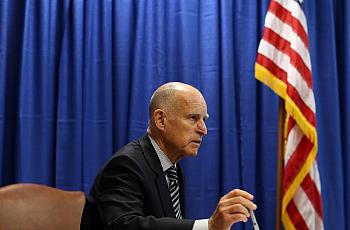
Kellie Schmitt
Affordable Care Act Blogger, Freelance Health Reporter

Affordable Care Act Blogger, Freelance Health Reporter
I write for the Center for Health Journalism's Remaking Health Care blog. Previously, I was a health reporter for the Bakersfield Californian, a staff writer for the San Jose Mercury News, and a business reporter for the San Francisco Recorder. I spent two years reporting from China for publications including The Economist's Business China, China Economic Review, and CNN Travel.
In 2012, I was a Health Journalism Fellow. My project examined the high number of foreign-trained doctors in California's Central Valley, a series which won awards from the Association of Healthcare Journalists and the California Newspaper Publishers Association.
I also worked with the Center for Health Journalism's multi-part, collaborative series on the devastating toll Valley Fever has had on California's Central Valley.

Starting treatment for opioid addiction in the hospital may seem obvious, yet it often doesn't happen. A growing program is trying to change that.

Recently signed legislation capped a big year for efforts to combat a regional disease long overlooked by lawmakers.

The Miami Herald's Daniel Chang and Politico's Victoria Colliver share their routines, sourcing strategies and other tips for covering the fast-moving health policy beat.

The challenge for journalists covering the country’s unchanged perinatal mortality rate is to go beyond the hospital setting, says Boston University's Eugene Declercq.
![[Photo by John Moore/Getty Images]](/sites/default/files/styles/teaser_list_thumbnail/public/title_images/unnamed_229.jpg?itok=ZV1nQbJk)
“There’s real hope that help is on the way,” health workforce researcher Edward Salsberg said.

“This is really an issue that you can explore in your state no matter what,” said WSJ health policy reporter Stephanie Armour.
![[Photo by Lauren via Flickr.]](/sites/default/files/styles/teaser_list_thumbnail/public/title_images/unnamed_11.png?itok=EBYHPfS_)
Journalists are playing a key role in highlighting outrageous health care price tags. Why this flood of stories now? And will they make a difference?

NYT's Katie Thomas shares how she finds and vets stories of real people stung by ever-rising drug prices, and expert panelists provide key context for rounding out coverage.
![[Photo: Fred Tanneau/AFP/Getty Images] [Photo: Fred Tanneau/AFP/Getty Images]](/sites/default/files/styles/teaser_list_thumbnail/public/title_images/unnamed_184.jpg?itok=aw48tRhK)
“What is unique at this time is that the difference between what the private sector is paying and what the public sector is paying for health care is starting to diverge,” says John Hopkins' Gerard Anderson.
![[Photo by Frank Hayes via Flickr.]](/sites/default/files/styles/teaser_list_thumbnail/public/title_images/unnamed%20%281%29_29.jpg?itok=AbiQoE6c)
“This is just such a powerful but elegantly simple intervention,” said the lead researcher behind a recent study that used parent mentors to enroll families in Medicaid and CHIP coverage.